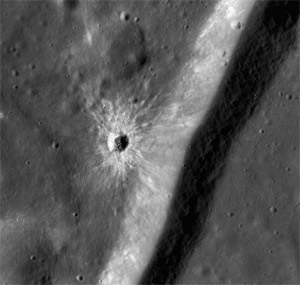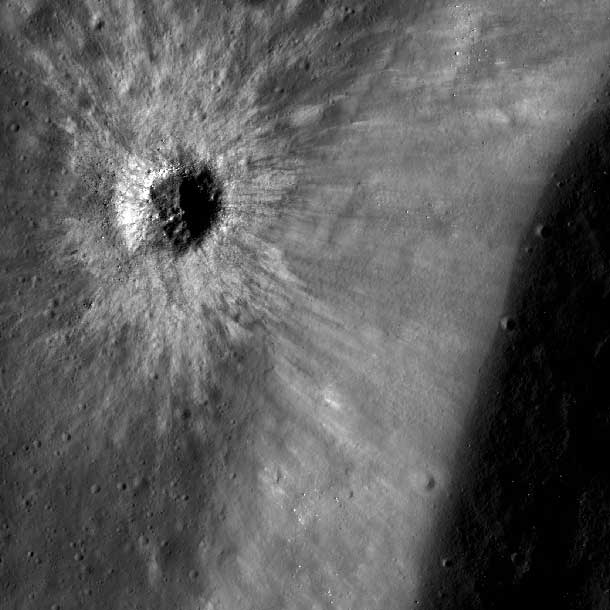Create a free profile to get unlimited access to exclusive videos, sweepstakes, and more!
A lunar crater is graben the spotlight

I am endlessly fascinated by the Moon. There may be an inherent bias there because it is, after all, the closest astronomical object in the sky. Still, it has an amazingly varied surface with lots of really odd features.
One of my favorite types of things to look at are overlapping features. It can produce a very complicated terrain, difficult to understand. Or can also create a lovely tableau that cleanly separates the two features, like this very pretty shot from Lunar Reconnaissance Orbiter (LRO) showing a fresh crater near a graben:
[Click to enlunenate.]
A graben is a crack or fracture. They form on the Moon when the crust is stretched, splitting the surface. They look like long, relatively straight and narrow valleys with steep sides. You can only see a part of it on the right side of the image above; the Sun is shining from the right and illuminating the left-hand side of the graben. The picture below is zoomed out and should help you see the situation.
 The crater is clearly younger than the graben feature. The radial streaks around the crater are called rays, and are formed when plumes of material ejected from the impact fall back down to the ground. They're common around young craters; solar wind, later impacts, and even thermal compression and expansion of rocks over the Moon's day-night cycle eventually erode them away.
The crater is clearly younger than the graben feature. The radial streaks around the crater are called rays, and are formed when plumes of material ejected from the impact fall back down to the ground. They're common around young craters; solar wind, later impacts, and even thermal compression and expansion of rocks over the Moon's day-night cycle eventually erode them away.
You can see the rays extended over and into the graben, so the crater must be younger. It's hard to say just how much younger, but even relative ages can help geologists understand the lunar surface better. And detailed images like this - you can see individual blocks of rock inside the crater itself - are crucial for study. Someday, I think, human geologists will be investigating places like this in person, and mapping missions like LRO will make that possible.
Image credit: NASA/GSFC/Arizona State University



























